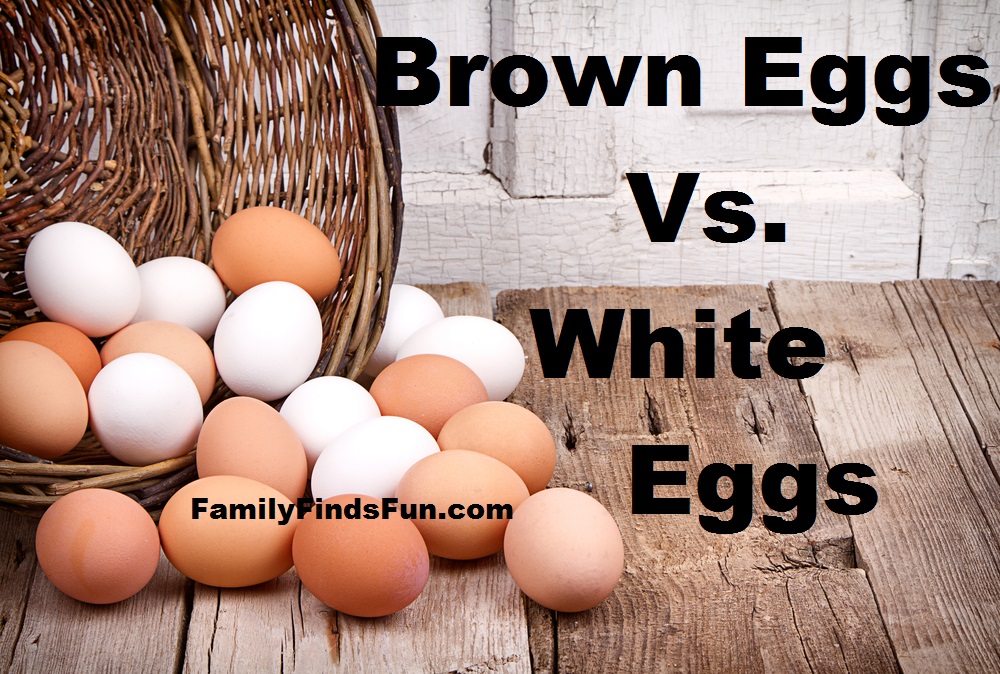Brown Eggs vs. White Eggs – The question often arises in grocery stores and kitchens across the country – Which egg is best for my family? The classic brown eggs vs. white eggs debate is on! Is there really a difference? Is one better than the other? What makes the egg shell a different color? Does it all really matter?
The secret is out! The difference isn’t in the eggs, it’s in the chicken!
Chickens with white feathers and white earlobes (didn’t know chickens had earlobes, did you?!) lay white eggs and chickens with reddish-brown colored feathers and red earlobes (really! They do!) lay brown eggs. There are even breeds of chickens that lay blue and speckled eggs, although these are far less common.
The color of the egg does not indicate the taste or the nutrition content of the egg. The shell thickness is not different. Shell thickness is based on the age of the chicken, so any breed will follow the same rule of thumb – the younger the chicken, the thicker the shell. Older chickens lay thinner shelled eggs, no matter the color.
Another legitimate question in the brown eggs vs. white eggs debate centers on price? Why are brown eggs more expensive if they are basically the same as white eggs? The perception is that brown eggs are more expensive, therefore, brown eggs must be better for you. Nonsense! Different breeds of chicken, different ages of chicken maybe, but no better nutrition content for your money so stick with what’s on sale or better yet, what you can get from your local farmer.
There are differences in yolk color of brown eggs and you will notice that a lot of local farmers’ chickens produce brown eggs vs. white eggs, but the reason for that is in the feed that is given to the chickens. If you are wondering about what feed has to do with the content of the eggs you place on your breakfast table, watch for the next article in this series on brown eggs vs. white eggs.


Leave a Reply